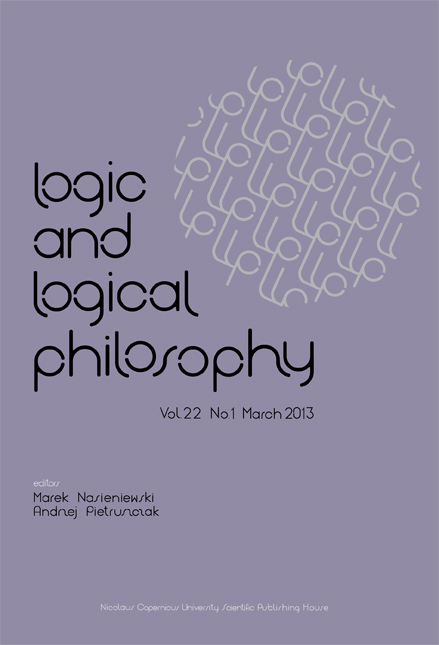Is human reasoning really nonmonotonic?
DOI:
https://doi.org/10.12775/LLP.2013.004Keywords
entimematic premise, error of generality, human thinking, nonmonotonic reasoning, nonmonotonicity, non-nonmonotonicity, Tweety the ostrich, reasoning increasing preciseness, reasoning from open and hidden premises, stereotypical thinkingAbstract
It seems that nonmonotonicity of our reasoning is an obvious truth. Almost every logician not even believes, but simply knows very well that a human being thinks in a nonmonotonic way. Moreover, a nonmonotonicity of thinking seems to be a phenomenon parallel to the existence of human beings. Examples allegedly illustrating this phenomenon are not even analyzed today. They are simply quoted. Nowadays, this is a standard approach to nonmonotonicity. However, even simple analysis of those “obvious” examples shows that they illustrate various problems of our thinking, among which none concerns nonmonotonicity.References
Gabbay, D. M., C. J. Hogger and J. A. Robinson (eds.), Handbook of Logic in Artificial Intelligence and Logic Programming, Volume 3, Clarendon Press, Oxford, 1994.
Ginsberg, M.ts L., “AI and nonmonotonic reasoning”, pages 1-33 in Handbook of Logic in Artificial Intelligence and Logic Programming, D. M. Gabbay, C. J. Hogger and J. A. Robinson (eds.), Volume 3, Clarendon Press, Oxford, 1994.
Poole, D., “Default logic”, pages 189-215 in Handbook of Logic in Artificial Intelligence and Logic Programming, D. M. Gabbay, C. J. Hogger and J. A. Robinson (eds.), Volume 3, Clarendon Press, Oxford, 1994.
Makinson, D., “General patterns in nonmonotonic reasoning”, pages 35-110 in Handbook of Logic in Artificial Intelligence and Logic Programming, D. M. Gabbay, C. J. Hogger and J. A. Robinson (eds.), Volume 3, Clarendon Press, Oxford, 1994.
Downloads
Published
How to Cite
Issue
Section
Stats
Number of views and downloads: 491
Number of citations: 3







